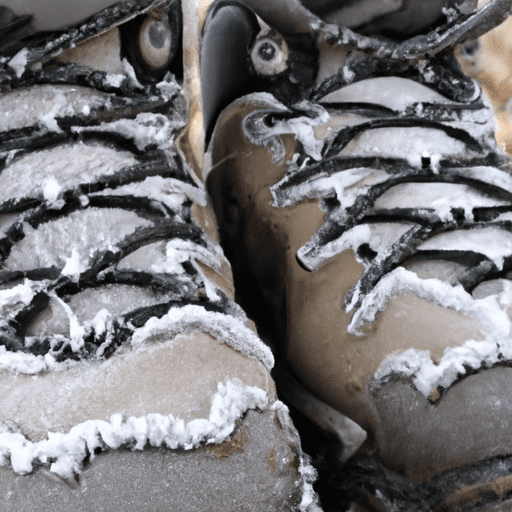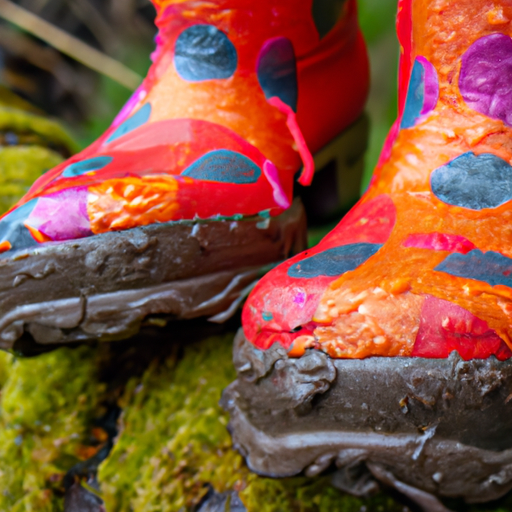Are you a hiking enthusiast who loves exploring the great outdoors during the colder months? If so, then you know how important it is to stay warm and comfortable while out on the trails. In this article, we will be discussing essential gear that will help you stay warm on cold-weather hikes. From insulated jackets and thermal baselayers to cozy hats and gloves, we've got you covered with all the necessities to keep the cold at bay and make your hiking adventures even more enjoyable. So grab a cup of hot cocoa and let's dive into the world of essential gear for staying warm on cold-weather hikes.
Layering Basics
Layering is essential for staying warm and comfortable on cold-weather hikes. By wearing multiple layers, you can easily adjust your clothing to regulate your body temperature as you exert yourself. This is achieved by using three key layers: a base layer, mid-layers, and outer layers.
Choosing the Right Base Layer
Your base layer is the foundation of your outfit and plays a crucial role in keeping you warm and dry. Look for base layers made of moisture-wicking materials, such as merino wool or synthetic blends. These fabrics will keep sweat away from your skin, preventing you from feeling chilled. Depending on the temperature, you can choose between lightweight or heavyweight base layers.
Insulating with Mid-Layers
Mid-layers provide insulation and help retain warmth. Fleece jackets and sweaters are popular choices for mid-layers as they are lightweight, breathable, and provide excellent insulation. If the weather is extremely cold, consider adding multiple mid-layers to trap more warmth.
Protecting with Outer Layers
Outer layers are designed to protect you from the elements, such as wind, rain, and snow. Look for jackets and pants that are both waterproof and breathable to keep you dry and comfortable. Additionally, outer layers that have adjustable features, such as hoods and cuffs, allow you to customize the fit and seal out the cold.
Head and Neck Protection
Head and neck protection are crucial when it comes to staying warm in cold weather. Heat can easily escape from these areas, so it's important to cover them properly.
Wearing a Warm Hat
A warm hat is a must-have for cold-weather hikes. Choose a hat made from insulating materials like wool or fleece, and make sure it covers your ears. This will help prevent heat loss from your head, keeping you warm and cozy throughout your hike.
Covering Your Neck with a Scarf or Buff
A scarf or buff is a great accessory for keeping your neck warm. It can also be pulled up to cover your lower face and nose if the temperature drops. Look for scarfs or buffs made from thermal materials like merino wool or synthetic blends that provide both warmth and breathability.
Hand and Foot Warmth
Your hands and feet are particularly susceptible to cold temperatures, so it's crucial to invest in quality gear to keep them warm.
Investing in Quality Gloves or Mittens
Investing in quality gloves or mittens is essential for protecting your hands from frostbite. Look for gloves or mittens that are windproof, waterproof, and insulated. Consider the activities you'll be doing on your hike, as some gloves are designed for specific outdoor activities like skiing or mountaineering.
Choosing the Right Socks
Choosing the right socks is key to keeping your feet warm and dry during cold-weather hikes. Opt for moisture-wicking socks made from materials like merino wool or synthetic blends. These materials will help keep your feet dry by wicking away sweat, resulting in warmer and more comfortable feet.
Considering Foot Warmers
If you struggle with keeping your feet warm, consider using foot warmers. These small heat packs can be inserted into your shoes or boots to provide additional warmth. They are particularly useful on extremely cold days or during breaks when your body is not generating as much heat.
Insulating Your Torso
Keeping your torso warm is vital for overall comfort and body temperature regulation during cold-weather hikes. Here are some effective ways to insulate your torso.
Using a Down or Synthetic Jacket
A down or synthetic jacket is an excellent choice for adding insulation to your torso. Look for jackets that are lightweight, packable, and offer excellent warmth-to-weight ratio. Down jackets provide exceptional warmth, while synthetic jackets are more moisture-resistant and can still keep you warm even when wet.
Adding a Fleece Vest
Adding a fleece vest to your layering system is a great way to add extra warmth to your core without sacrificing mobility. Fleece vests are lightweight, breathable, and can easily be worn over your base layer or under your outer layer.
Using Insulated Vests
Insulated vests are another fantastic option for keeping your torso warm. They provide insulation to your core while allowing your arms more freedom of movement. Insulated vests are often windproof, water-resistant, and can be easily layered over or under other garments for added warmth.
Protecting Your Extremities
When it comes to cold-weather hikes, it's essential to protect your extremities, including your feet and hands, from the freezing temperatures.
Wearing Insulated Boots or Waterproof Hiking Boots
Investing in insulated boots or waterproof hiking boots is crucial for keeping your feet warm and dry. Insulated boots have built-in insulation that helps retain heat, while waterproof boots prevent moisture from seeping in and making your feet cold and uncomfortable.
Utilizing Gaiters
Gaiters are protective coverings that wrap around your lower legs and ankles. They are designed to keep snow, water, and debris from entering your boots or pants. Gaiters are particularly useful when hiking in deep snow or wet conditions, ensuring that your feet and lower legs stay dry and warm.
Using Hand and Toe Warmers
Hand and toe warmers are small heat packs that can be inserted into your gloves or boots. They provide instant warmth, particularly when your hands and feet start to feel cold. Hand and toe warmers are disposable and can be easily found in outdoor stores or online. They are a great addition to your cold-weather hiking gear.
Essential Accessories
In addition to the basic layering system, there are several essential accessories that can greatly enhance your comfort and warmth during cold-weather hikes.
Carrying a Lightweight Packable Blanket
Carrying a lightweight packable blanket is a wise choice, especially for longer breaks or emergencies. These blankets are designed to provide insulation and can be easily stored in your backpack. They are great for sitting on or wrapping around your body to trap heat.
Using Reusable Hand Warmers
Reusable hand warmers are an eco-friendly alternative to disposable hand warmers. They are activated by snapping a metal disc inside, which generates heat. Reusable hand warmers can provide hours of warmth and can be recharged by boiling them in water. They are a handy accessory to have for additional warmth on your hike.
Utilizing Heat Pads or Hot Water Bottles
Heat pads or hot water bottles are excellent for keeping your body warm when the temperature drops. These items can be placed inside your jacket or sleeping bag to provide long-lasting warmth. Heat pads are often disposable, while hot water bottles can be refilled with hot water multiple times.
Considerations for Lower Body
When it comes to keeping your lower body warm on cold-weather hikes, there are a few key considerations to keep in mind.
Choosing Insulated Pants or Bibs
Investing in insulated pants or bibs is an excellent option for added warmth on your lower body. Insulated pants are designed to trap heat and keep your legs warm, while bibs provide both chest and leg insulation. Look for pants or bibs made from waterproof and breathable materials to ensure maximum comfort.
Layering with Leggings or Long Underwear
Layering with leggings or long underwear is a practical way to add extra warmth to your lower body. Consider wearing thermal leggings or long underwear beneath your pants or bibs. These base layers will provide insulation and help regulate your body temperature, keeping you comfortable in cold conditions.
Importance of Hats and Beanies
Hats and beanies are essential accessories for staying warm during cold-weather hikes. They provide additional insulation for your head and can be used in different ways to maximize warmth.
Insulated Hats with Ear Flaps
Insulated hats with ear flaps are a great choice for protecting your head and ears from the cold. Look for hats made from materials like wool or fleece, with a windproof outer layer. The ear flaps can be worn down for extra warmth or folded up when not needed.
Using a Beanie under a Hood
Wearing a beanie underneath a hood is a savvy way to add extra warmth to your head and neck. The beanie acts as an additional layer, trapping heat and preventing it from escaping. When wearing a hood, make sure it's adjustable and can be cinched tightly around your face for maximum protection against the cold.
Keeping Your Core Warm
Your core plays a vital role in regulating your overall body temperature. Here are a couple of strategies to help keep your core warm during cold-weather hikes.
Using a Vented Vest
Using a vented vest is a practical way to regulate your core temperature. Vented vests allow excess heat to escape while still providing insulation to your torso. Look for vests with adjustable vents that you can open or close depending on your comfort level. This ensures that you stay warm when needed but don't overheat during strenuous activities.
Opting for Down Jackets with Pockets
Opting for down jackets with pockets is a smart choice for extra warmth. Down jackets are excellent insulators, and pockets add an additional layer of protection. Your hands can be inserted into the pockets to warm up or to shield against wind and cold temperatures. Additionally, the pockets can also be used to store small essentials, like gloves or a thermal hat.
Staying Warm during Breaks
When taking breaks during your cold-weather hike, it's essential to stay warm and prevent your body temperature from dropping excessively.
Using a Lightweight Sitting Pad
Using a lightweight sitting pad has multiple benefits. It provides insulation between you and the cold ground, preventing heat loss through conduction. Sitting pads are lightweight and can be easily carried in your backpack. They are the perfect accessory for taking a break without losing valuable warmth.
Carrying a Compact Portable Stove
Carrying a compact portable stove is a great way to warm up during breaks. You can boil water or prepare a warm meal to help replenish lost calories and provide a temporary heat source. Compact stoves are lightweight and easy to use, making them a valuable addition to your cold-weather hiking essentials. Remember to check any regulations or restrictions regarding open flames before using a portable stove.
By following these layering basics and considering the specific needs of your head, neck, hands, feet, torso, extremities, and lower body, you can ensure a comfortable and warm hiking experience even in the coldest of weather. Don't forget to pack essential accessories like a lightweight packable blanket, reusable hand warmers, and a compact portable stove to enhance your warmth during breaks. Stay prepared, stay warm, and enjoy your cold-weather hikes to the fullest!






